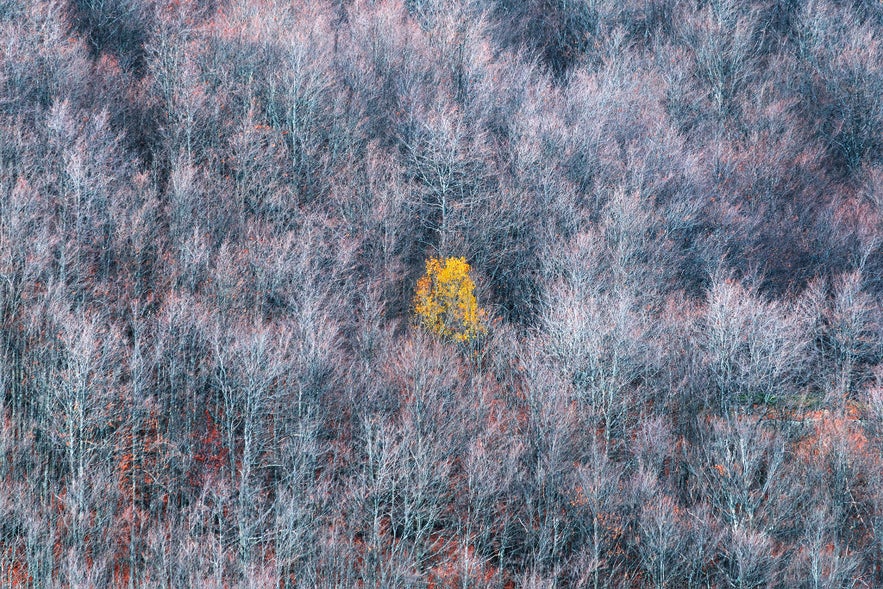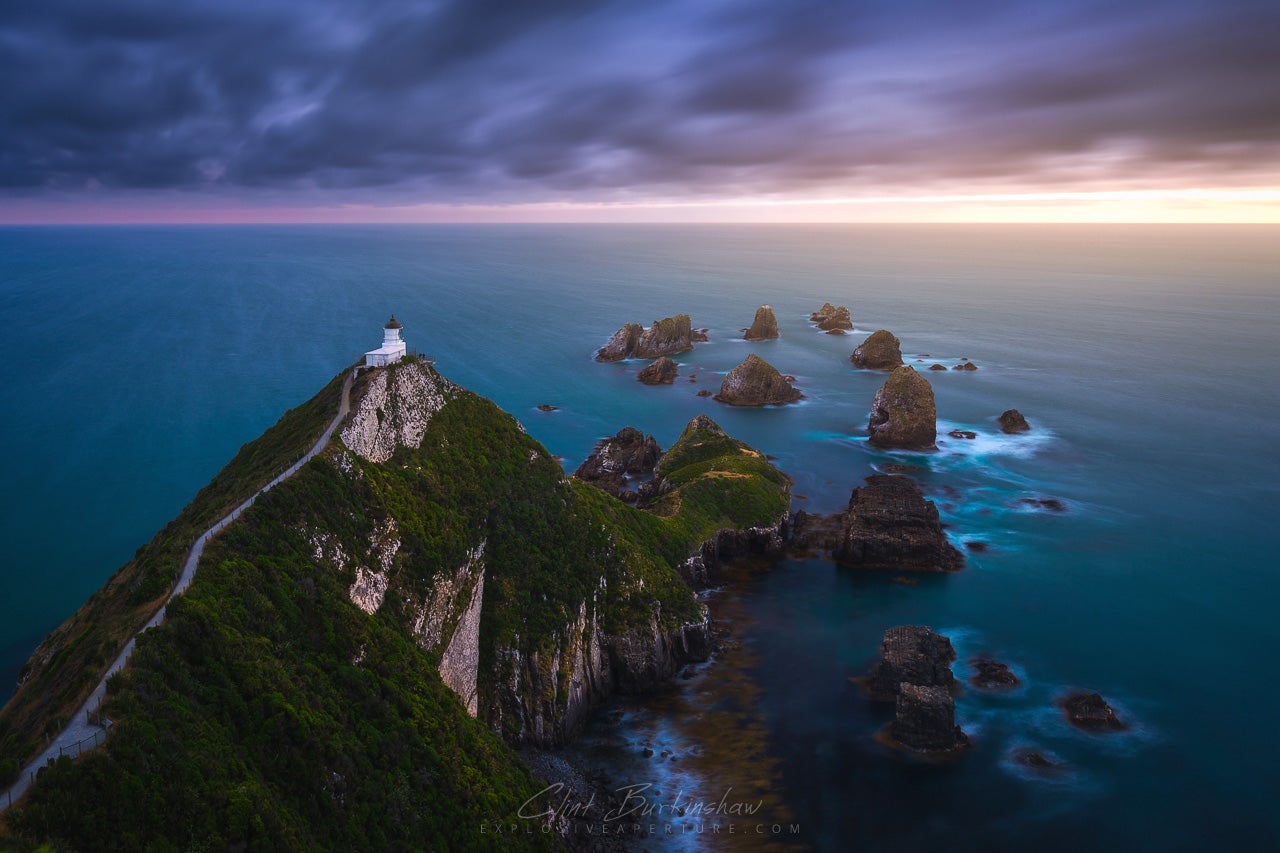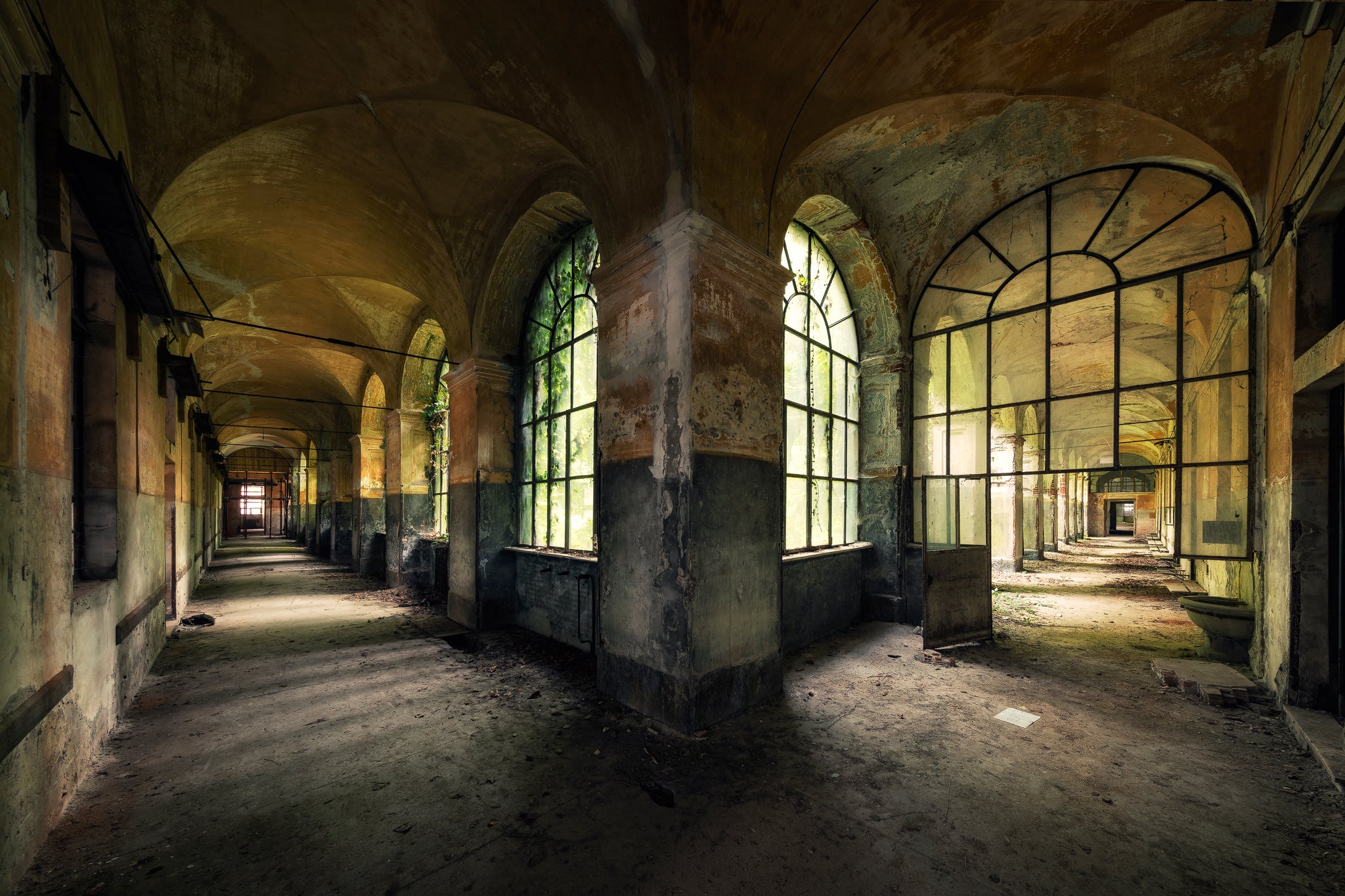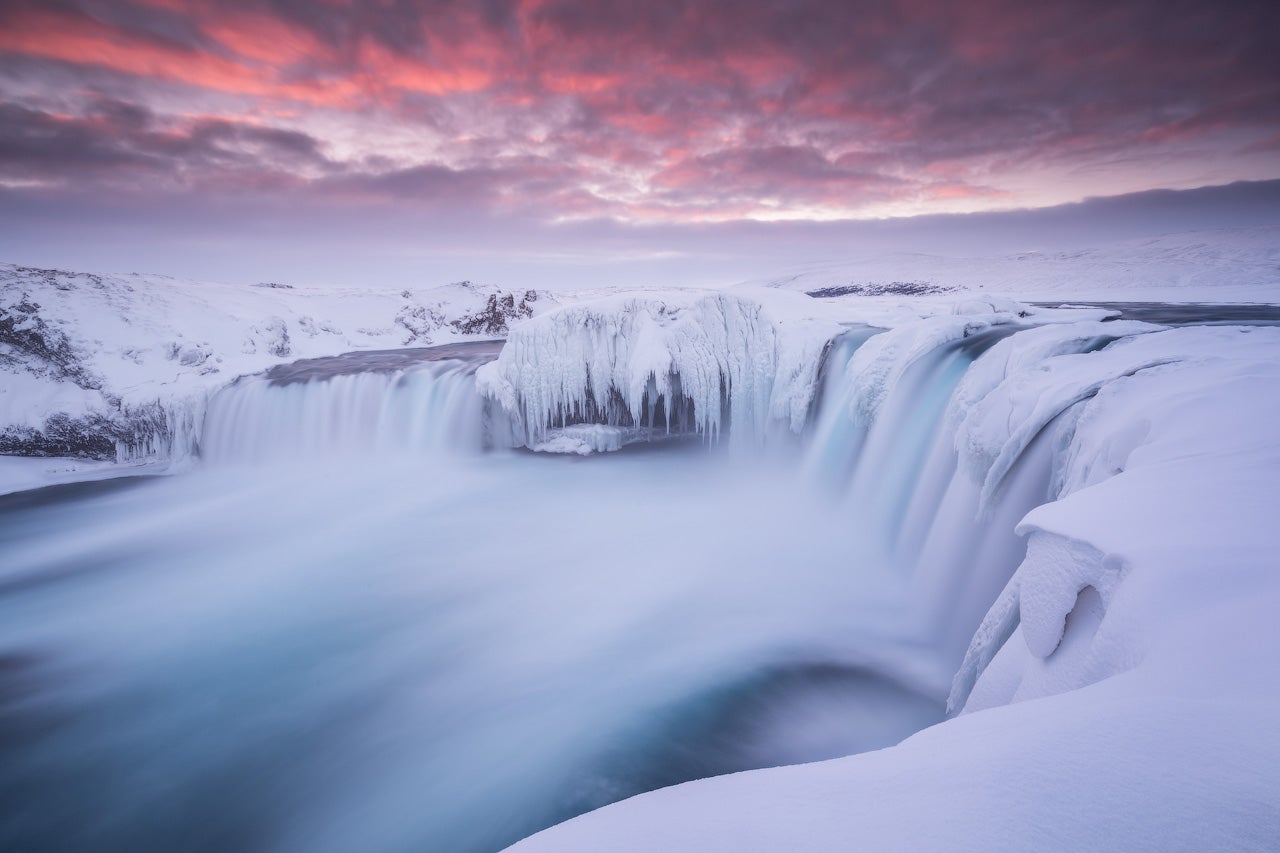
Let me ask you this: how many landscape photos have you ever seen in your entire life that have triggered some emotions in you? I’m not talking about the amazement caused by the beauty of the place or even the splendid colours in the shot. In fact, I'm not even referring to an image with a well-thought composition.
- Check out the Ultimate Guide to Composition in Photography
- Learn all about How to Take Great Photos in Bad Lighting Conditions
Landscape photographs have this “problem” whereby however beautiful they may be, many times they are nothing more than that. Many seem to be just like postcards. While they can be utterly spectacular, they won’t give you the chills or the goosebumps. It all boils down to the point that they won’t make you feel any emotion. In other words, many landscape images are beautiful but empty.
There is no magic formula for evoking emotion with landscape photography. It’s not a technique, it’s not a process and it's definitely not mechanical. You can’t just say “okay, now it’s time to create some images that evoke emotions” and do it. Creating emotion with your landscape photography takes a little bit more finesse and patience. So without further ado, let's take a look at how you can get a little bit closer to making your audience feel something when they look at your photos.
What Makes a Great Photo?
There are a lot of variables to consider when thinking about what makes a great photo – perhaps even too many to list. For example, light is undeniably one of the most crucial factors that can make or break an image. Composition plays an important role as well.
 Light and composition play an important role in creating emotions in photographs. Photo by: 'Leonardo Papèra'.
Light and composition play an important role in creating emotions in photographs. Photo by: 'Leonardo Papèra'.
If you assume that the photographer has a good understanding of their gear and how to handle the technical aspects of shooting, then the main thing which can make a huge difference in the success of their results is how they relate to their subjects. In combination with how the specific scenery makes them feel, what they see in a particular scene can have a large influence upon the images that they take. Some photographers have a peculiar ability to be able to see what other photographers don't and subsequently, to evoke emotions that others don't feel or are unable to bring to the surface.
What Are Some Examples of Emotions?
There are countless emotions that you can convey to your audience in your images. However, emotions can also be very subjective, so don't expect to evoke the same emotion in each of your viewers because it just isn't possible.
 Emotions are subjective. Photo by: 'Leonardo Papèra'.
Emotions are subjective. Photo by: 'Leonardo Papèra'.
That said, the photographer has a lot of discretionary power when it comes to deciding what type of emotions to evoke in their audience. For example, in the image above, I already knew what kind of feelings I wanted to convey while I was shooting. At the time, I felt a mix of fear, anxiety and dread – nothing like the emotions that a relaxing, peaceful and cloudless summer sunset would evoke.
As you can see, emotions can be tied specifically to the atmosphere of a scene. Let's take a look at a few examples of emotions and how you can evoke them in your landscape photography with the right shooting conditions.
- See also: Ultimate Guide to Forest Photography
Happiness
Although this can be an easy emotion to evoke in other genres of photography, happiness can often be tough to convey in landscape photography. A child laughing, that look on someone's face when they receive great news – these are two types of photos that will make you feel happy, even for just a small moment in time. The common denominator in these images are the subjects, which are people. It's normal to feel more empathy for our fellow humans, since most of us can read facial expressions and understand what others are feeling with great accuracy.
 You can convey happiness with colours and light. Photo by: 'Leonardo Papèra'.
You can convey happiness with colours and light. Photo by: 'Leonardo Papèra'.
With nature, landscapes and cityscapes, it's a lot harder to express emotion through your photography. You'll need to take advantage of a series of conditions in order to have even a small chance of capturing the atmosphere of the scene.
To evoke happiness with landscape photography, try looking for sunny conditions and shooting during the golden hours. It's also a good idea to use good foreground elements in tandem with a backdrop that your audience may connect with, which can possibly spark a feeling of happiness.
 Fireworks can create excitement and happiness. Photo by: 'Leonardo Papèra'.
Fireworks can create excitement and happiness. Photo by: 'Leonardo Papèra'.
In the image above, I took advantage of a fireworks display during a local celebration to capture the liveliness of the town.
Solitude
Solitude is a feeling that you can convey far more easily than many other feelings in landscape photography. The main thing that you will need to do is to isolate your subject as much as you can.
An ideal situation is to include only one main subject in the entire frame, as in the shot below.
 Using a single subject can create a feeling of solitude or loneliness. Photo by: 'Leonardo Papèra'.
Using a single subject can create a feeling of solitude or loneliness. Photo by: 'Leonardo Papèra'.
To exaggerate the feeling, the light should be delicate, without strong contrasts – that is, unless they help you to enhance the solitude.
Calmness
Another feeling that is commonly associated with landscape imagery is calmness. This is a feeling that is easy to understand, particularly when we are out shooting in-field and faced with certain conditions. You can usually tell right away whether a scene seems quiet or dramatic, based on the weather and the light.
 Soft lighting is perfect for evoking a feeling of calmness. Photo by: 'Leonardo Papèra'.
Soft lighting is perfect for evoking a feeling of calmness. Photo by: 'Leonardo Papèra'.
Perfect reflections and motionless scenes – these are the types of situations you should look for when capturing a feeling of calm. Everything that moves or gives the feeling of chaos should be kept out of your frame.
 Motionless scenes help evoke a sense of calm. Photo by: 'Leonardo Papèra'.
Motionless scenes help evoke a sense of calm. Photo by: 'Leonardo Papèra'.
To make use of this emotion in your photography, make sure that the contrasts are smooth and delicate. Your post-processing should be very subtle.
Vulnerability or Awe
These may be the easiest emotions to evoke with landscape photography; there are endless majestic views around the world, from rugged mountains and rough seas to huge waterfalls and calving glaciers. If framed nicely, almost every natural phenomenon will make the viewer feel somewhat overwhelmed. As humans, It’s in our nature to feel vulnerable or in awe when we are faced with things we can't control or which can be dangerous.
 Crashing ocean waves can make us feel very vulnerable and powerless. Photo by: 'Leonardo Papèra'.
Crashing ocean waves can make us feel very vulnerable and powerless. Photo by: 'Leonardo Papèra'.
To capture these feelings, it's about making sure that the light and weather conditions match the drama of your subject. For example, seascapes that will evoke the feeling of vulnerability are usually taken during incoming or outgoing storms, when the waves can be choppy and unpredictable.
If your aim is to evoke a sense of awe with the Northern Lights, then you will need to look for clear skies and wait for a period of strong solar activity, which will result in a stronger and more dramatic display in the night sky.
 You'll need strong solar activity to evoke vulnerability or awe with an image of the Northern Lights. Photo by: 'Leonardo Papèra'.
You'll need strong solar activity to evoke vulnerability or awe with an image of the Northern Lights. Photo by: 'Leonardo Papèra'.
To convey vulnerability or awe, each phenomenon of nature is best captured with extraordinary conditions, which will help you to capture the atmosphere of the scene. So before you go out on location to shoot, think about what kinds of conditions you will need in order to achieve the results you may have in mind. This will have a positive effect upon how you look at the scene, the range of emotions that you'll feel, as well as how well you'll be able to convey these feelings to your audience.
- See also: Guide to the Aurora Forecast in Iceland
Confusion
An emotion mostly determined by the technique and/or the subject you are shooting is confusion. As humans, we are naturally attracted by the things we don’t understand at first glance. So by using particular techniques or shooting abstract views, you may pique interest in your audience – or at least make people stop for more than a fraction of second when they look at your images, as they try to figure out what the subject is and how you managed to take the shot.
 Certain photographic techniques, such as intentional blur, can create a sense of confusion. Photo by: 'Leonardo Papèra'.
Certain photographic techniques, such as intentional blur, can create a sense of confusion. Photo by: 'Leonardo Papèra'.
Long exposures, intentional blur, high (or low) key contrasts, intricate subjects and small abstract scenes: these are the photography techniques that you can use to “confuse” your viewers and raise their level of interest.
 High contrast scenes can evoke a sense of confusion. Photo by: 'Leonardo Papèra'.
High contrast scenes can evoke a sense of confusion. Photo by: 'Leonardo Papèra'.
- See also: Ultimate Guide to Long Exposure
How do You Evoke Emotions in Photography?
As I've already mentioned, evoking emotions in photography is not an easy task. It's a lot easier to do when your subject is human. We naturally feel empathy when we see other people in pictures or portraits, since it’s easier for us to read the emotions on their faces and the feelings they express. A good way to evoke emotions through photography is to include people in your photos, possibly in a genuine or natural pose. Don’t force your models to express a specific feeling, since the result will probably look unnatural. Rather, you should help your subject to feel the emotion you are trying to convey with your photos.
Another good way to evoke emotions with photography is to shoot animals, such as pets or wildlife. It'll be harder to take a good image compared to photographing people, as it’s less likely that animals will help in the form of modelling or posing for you. Many photographs of pets and wildlife may seem a bit cliché but they will still generate some kind of emotion in your audience. Dogs, cats, rabbits and other pets are all great subjects. A lens with a great bokeh will help you to isolate the subject and focus the viewer’s attention on the animal.
So what about our beloved landscapes? Whether your aim is to capture a seascape, cityscape, abstract images or aerials, the lack of a subject (person or animal) that clearly expresses their feelings is hard to replace. The only way to evoke emotions with these types of photography is to do some planning before you go out to shoot. For this, you'll need to know exactly what we want to achieve; conveying emotions with landscape photography is not usually due to luck.
If you do everything in your power to create an emotional photo, from studying the weather forecasts to understanding what light you'll need for that specific shot – be it morning light, ambient light or sunset light – then you'll be well on your way to conveying the emotions that you have in mind.
 Plan ahead and know what you want to achieve. Photo by: 'Leonardo Papèra'.
Plan ahead and know what you want to achieve. Photo by: 'Leonardo Papèra'.
At the risk of sounding repetitive, to evoke emotions with landscape photography, you just need to know what you want to achieve.
- See also: 15 Tips for Monochrome Photography
Top Tips for Capturing Emotions in Photos
While there is no secret formula to capturing atmosphere, there are a few general tips I can share that will help you to achieve your goal of evoking emotions with your landscape photography.
Tip #1. Be Invisible
Well, not literally.. but when shooting people, try to give them space and time. Don't pressure them about how they should pose and/or what they should do. Instead, wait for them to do things naturally or place them in the right context where things can unfold.
If you are photographing ceremonies such as weddings, then make sure that your subjects won't feel your presence, unless you are setting up a precise shot. This way, you'll be able to capture the full range of their expressions and emotions without any force or coercion.
Tip #2. Use the Right Light
It may not come as a surprise that light is fundamental in photography, right? Well, if you want your photos to evoke emotions, then you should be even more careful about your lighting choices. A landscape won’t even look remotely the same when shot in the harsh midday light as opposed to during sunrise or sunset. Nor will it be the same with foggy conditions or a thunderstorm.
Think about what kind of light will fit best with that landscape and make a plan to return to the scene when you can capture particular conditions.
Tip #3. Focus on Details
Whether you are shooting landscapes, people or animals, focusing on a specific detail will help the viewer to understand the image better. They'll also be able to concentrate on the emotions that they are feeling when their eyes are immediately drawn to the important elements within your frame, rather than spending time in search of the subject.
 Know what kinds of emotions you want to evoke in your audience so that you can plan for the required conditions. Photo by: 'Leonardo Papèra'.
Know what kinds of emotions you want to evoke in your audience so that you can plan for the required conditions. Photo by: 'Leonardo Papèra'.
Conclusion
As photographers, when we are out in-field, we are usually so focused on getting a balanced exposure, the best composition or using the right technique that we often forget the most important thing, which is to convey feeling and evoke emotions with the pictures that we are creating. It is important to know what kinds of feelings you want to transmit before you even head out to take the shot, so it pays to do a little planning ahead of time. Evoking emotions with photography may seem difficult at first but with time, effort and patience, you'll find that it will become like second nature to you!
About the author: Leonardo Papèra is a landscape photographer based in Italy. You can find more of his work on his website or by following him on Instagram.
Have you got a particular story about evoking emotions with landscape photography? Is this something that you've struggled with before? How have you managed to overcome it? What kinds of techniques can you recommend to others to help them convey the atmosphere of a scene? Share your thoughts by leaving a comment below!











